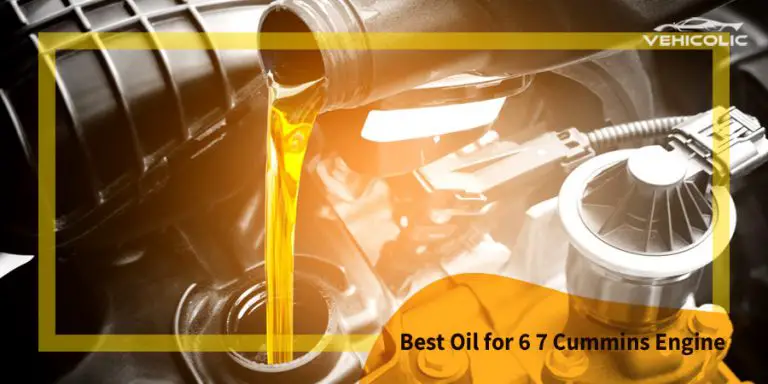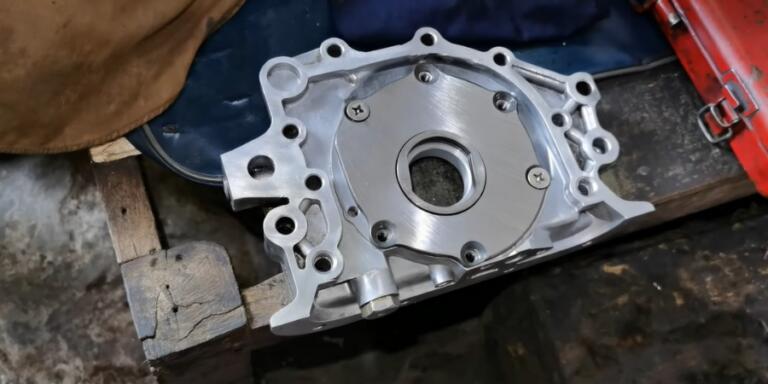How to Fix Coolant Mixing with Engine Oil?
Ever seen a milky substance when trying to check your engine oil level using the dipstick?
If that’s a yes, then you should know that your engine has an internal oil leak or leaks. The best reason, the coolant is mixing up with your oil; you must act to prevent it from destroying your engine system.
Immediately you notice coolant fluid in your motor oil, you must immediately fix the cause or call a mechanic to help you if you can’t perform this service.
Using this article, we will help you with how to fix coolant mixing engine oil issues and the common symptoms when your vehicle has developed this fault.
How to Know if there is Coolant in Engine Oil
Usually, when your coolant mixes up with your engine oil, it either shows an engine fault or your head gasket is bad. When this problem occurs, the oil begins to lose its lubricating and viscosity power, which can head straight into an engine failure.
A few factors can point out the fact that you have a foreign liquid in your engine oil, and they are:
Smell
You must perceive something like a sweet smell when a coolant leak drops around the engine bay area, even when it’s not touching the ground.
There’s a chance that coolant isn’t flowing in the right direction and has now ended up in the oil area.
When there is coolant in your oil area, you will most likely perceive a sweet smell.
An alternative method of checking is to draw out your dipstick and sniff the oil area a bit. You will get off that smell, even if it’s just a little coolant or antifreeze mixed.
Milky Colour
Coolant in your oil pan often leaves a brown, green, or orange fluid in your crankcase, depending on which color of coolant or antifreeze you have in your vehicle.
The coolant and oil form a milky-colored fluid as you run your engine while this mixture happens. This formed fluid can clog your engine passageway, which spells trouble for your engine.
Hence whenever you take out your dipstick and notice a milky liquid on the stick, you are sure there is an oil-coolant mixture in that engine system.
Please note that your coolant level could also be dropping based on normal conditions; you don’t have to bother when it comes up sometime. But if the drop becomes frequent, then be worried.
Loss of coolant
Frequent drops in your coolant level, and you aren’t observing any leaks on the ground or the pipe. It shows that your coolant is leaking somewhere internal and flowing into the wrong location, like into the crankcase.
You must check for leaks whenever you observe consistent drops in your antifreeze level.
You have to start the inspection externally before concluding it’s internal. Once you have discovered it is internal, then you need to check your oil level with your dipstick to see if that’s where the coolant is going.
What Causes Coolant in the Oil?
Many factors must be considered when streamlining what causes coolant in your oil area or crankcase. Let’s examine these factors one after the other.
Oil Cooler
Although this might not be your first thought, the oil cooler can cause coolant to flow into your crankcase. The oil cooler is made to house both your coolant and oil in different storage.
But when there is a crack or leak in this cooler, the oil will flow into the coolant storage compartment, hence this problem.
Damaged Gasket Head
Your vehicle’s gasket heads to rest in between your engine block and cylinder head to stop any liquid from coming in contact with your motor oil.
A blown or leaky head gasket will cause other liquids to enter your oil compartment, like the coolant, which can cause engine overheating.
This issue with oil coolant can result from a bad head gasket and has to be changed immediately. You can get a gasket tester kit from your local store to check if it’s a head gasket issue.
Handling the repairs might require more technical experience, so if your tester kit has identified that it is the gasket at fault. Then you should seek the services of a mechanic.
The repair might involve removing the head cylinder and timing belt before you can gain entry to the gasket area. The repair cost can be up to $1000, including purchasing a new gasket.
Faulty Engine Block
A faulty engine block can be one of the probable causes of coolant in your engine oil. But this is a difficult fault because engine blocks are durable and don’t easily break.
In some cases, a damaged block can cause you to replace your entire engine, while in order cases, you can focus on repairing just the engine block.
Engine blocks can be gotten from a scrapyard, or you can get a new one if your budget allows.
Engine Overheating
An overheating engine can damage your head gasket component, and it can be the cause of your coolant and oil mixing up. The increased temperature of your engine can destroy your head gasket, which will cause this type of problem. It makes your coolant and oil go through the wrong channels.
How to Fix Coolant Mixing with Engine Oil
The actual cause of the problem will determine if you need a professional mechanic or can handle it yourself. As we highlighted above, the common causes are faulty head gaskets, overheating, bad oil coolers, etc.
Suppose you are dealing with a bad or leaky head gasket; you have a limited option.
You have to take your vehicle to a mechanic to assist in pulling off the gasket, then replace and repair other damages that might have occurred. Another option is to use a steel sealant on your radiator and leave it to do the work.
The latter option is much less expensive because getting a new head gasket can cost you a lot of money, based on your vehicle model. Although it is a temporary fix, it can solve the problem for some time.
If this second option is what you are going for, we will show you the best way to get it done.
To start, thoroughly clean the coolant in your radiator. A dirty coolant must be flushed out, and a fresh one must be added.
Take out the bolts tightening your thermostat housing, and detach the thermostat. Fasten the thermostat housing alone, leaving the thermostat outside.
With that, the sealant will have enough room to glow and have a higher chance of covering the leak.
You might also have to remove the spark plug to check for coolant stains. If any coolant is seen on the plugs, then your coolant is going to that cylinder.
An old trick to solve this issue is to tighten all the other plugs and leave the one stained with coolant open. It would be best if you unplugged the cylinder injector to avoid it firing up.
Pour the seal fluid down the radiator, then put your car on. It will make so much noise because that hole has no spark. Let your engine idle for close to 30 minutes so the sealant can work. Shut down your engine after 30 minutes.
Let the engine cool off for a while, and then repeat the same process up to four times.
Finally, let the sealant dry off without the hole plug. Remember to place your thermostat back into its housing.
After many hours, put the spark plug back in and run your vehicle for a while. Gasket holes are a difficult job for the coolant. So the first option is still the best.
FAQs
What does engine oil look like with a bad gasket head?
You already know coolant and oil don’t flow through the same passageway; they are not meant to come in contact with each other, as they have different compartments. Your oil color will change in minutes when the coolant gets in the crankcase. Pulling out your dipstick for an oil check, you will see a milky-colored fluid.
What happens when I put coolant in oil?
When you pour your coolant in the engine oil or your coolant gets mixed up with the oil for any reason, the oil immediately loses its viscosity and lubrication effect, which can cause overheating and, in extreme situations, engine damage.
Whenever you notice the coolant is in your oil, you must stop your vehicle if it’s running, inspect the situation, or call your mechanic to find out what’s wrong.
Final thoughts
Noticing some coolant in your oil is not normal and should be treated with a high-level priority. It would help if you got the cause of the problem fixed immediately.
There are situations where the cause requires just minor repairs, which could be a quick fix, while a mechanic should do difficult repairs as it needs technical knowledge of how your engine is designed.
We hope this information helps you tackle and handle this type of situation if you find yourself trapped with this issue.




